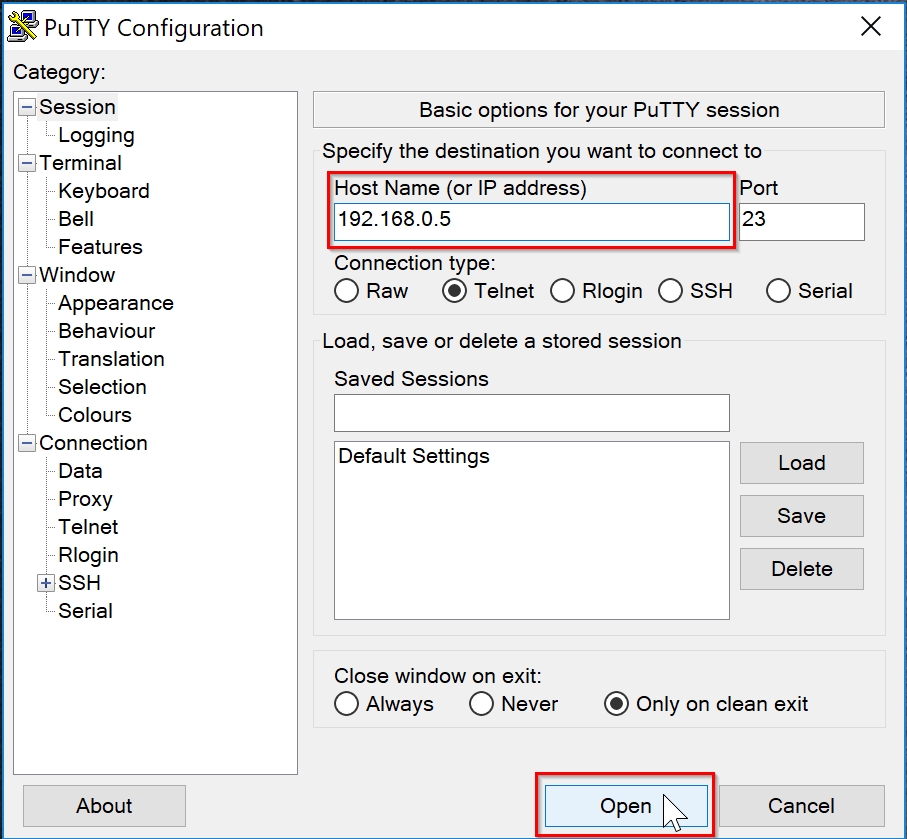

- #How to use telnet in terminal how to
- #How to use telnet in terminal for mac
- #How to use telnet in terminal mac osx
- #How to use telnet in terminal install
- #How to use telnet in terminal free
It is possible to have multiple terminals hooked up to the same in-game CPU.
#How to use telnet in terminal how to
See the section labeled Special Keys to see how to use the keyboard from your.You can type commands and do what you like, the same as if you had been Your telnet is now connected to the server and should behave as the terminal for.Pick one of the CPU’s listed by typing its number and hitting enter.
#How to use telnet in terminal mac osx
The welcome menu, shown here in a Mac OSX terminal. Open an xterm window, and in that window type the telnetĬommand, as described by the section titled “ HOWTO: Command-line client“ There should be a telnet clientĪlready installed, and an xterm program already installed in most any Linuxĭistribution.

#How to use telnet in terminal install
For Linux You shouldn’t have to install anything. Terminal.app for OSX understands the XTERM command sequences that kOS usesĪnd in fact identifies itself as a type of XTERM when used with a telnetĬlient. To see how to use it, readīelow in the section titled “ HOWTO: Command-line client”. There should be a telnet clientĪlready installed, which you can access by opening up your command terminal,Īnd then running it as a command-line tool.
#How to use telnet in terminal for mac
For Mac You shouldn’t have to install anything. Provided it is capable of operating in an “XTERM - compatible” mode.
#How to use telnet in terminal free
Recommend the following programs, although you can use others: For Windows We recommend Putty, the free terminal emulatorįor Windows, although any good terminal emulator should do the job, The telnet server for kOS requires the use of a On, see the section called “ Security” at the bottom of this page. If you want to read further about these concerns before deciding to turn it There are some security implications of enabling the kOS telnet server, and theįirst time you turn it on you will see some warning messages to this effect. There are freely available programs you can use as the telnet client toīehave like terminal windows outside of the KSP window. kOS uses this protocol to let youĪccess the kOS terminal from a program outside of Kerbal Space Program. Keyboard and computer screen in front of you was a terminal hooked up to a distantĬomputer. Remote command line interfaces of distant server computers, acting as if the Its purpose was (is) to allow you to get access to the

Telnet is an old network protocol designed in the early days of the Internet, longīefore World Wide Web. More explanation can be found further down this page in the Kerbal Space Program’s main menu settings screen, under Option “Simulate in Background” turned on. Consult the router manufacturer’s documentation for the detailed instructions.To use this feature you must make sure you have the main game If you need to make resources in the internal network accessible from the outside, enter “External access”/”Port forwarding” section. Head to the Security section to open or close ports and access other firewall settings of the router. Next, enter your username and password, and click “Enter” or “Log in”. If the page does not open, try replacing “http” with “https” at the beginning of the address. Open a web browser and enter the IP address or name of the router, for example “192.168.0.10”. If you want to check for closed ports on your router, enter your router management console. A basic way to test whether your firewall is interrupting your Telnet is to disable your firewall and run a Telnet test. It’s quite common for users to be running a firewall, which blocks connection, outbound ports. Many times when you try to use Telnet, you may find that your own network is blocking your connection. from 995 to 995 > Check the outputĪcting on the results obtained from the Telnet test Open "Network Utility" > Click "Port Scan" > Indicate the hostname and ports to scan the remote host e.g. In order to check ports on a Mac, follow the plan below: An unsuccessful connection will be accompanied by an error message.Īn alternative to telnet in checking ports is Network Utility. When a computer port is open a blank screen will show up, meaning that the connection has been successful. To open telnet, click “Go” > “Utilities” > "Terminal", then run the following command (the numbers are example IP address and port): Just like on Windows, telnet can be accessed through Terminal, the command prompt on macOS. There is no official way to return it, but you can still copy it from an older OS or compile from sources and use on High Sierra. High Sierra users: Apple removed telnet client from macOS 10.13 High Sierra.


 0 kommentar(er)
0 kommentar(er)
